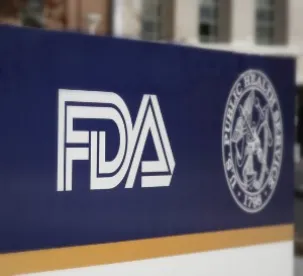Every public health crisis will inevitably cause shortages of medical supplies due to the sudden increase of demand as well as disruption of the supply chain. Facing the COVID-19 pandemic, we are experiencing shortages from drugs to ventilators and from surgical gowns to personal protective equipment. In response, several agencies within the U.S. Department of Health and Human Services (HHS) – the Centers for Disease Control and Prevention (CDC), the National Institutes of Health (NIH), the Federal Food and Drug Administration (FDA), and others – are taking actions to protect the American public in this challenging time.
In this series of alerts, we will summarize for our clients in the medical and biological industries the FDA’s role in countering COVID-19. With the fast-changing developments at the FDA, manufacturers as well as diagnostic laboratories should strive to maintain awareness of decisions and actions taken by the agency, and should take corresponding measures to comply with the agency’s requirements to protect the welfare of the American people as well as the integrity of their businesses. Insurance carriers also should be alert for the outbreak’s impacts on the manufacture and shipment of their covered products and the FDA’s reaction to these impacts, as both could precipitate the need for changes in their policies.
Active Surveillance of Shortages
As early as February when the epicenter of COVID-19 was still in Wuhan, China, the FDA started its preparations for the potential impact of this outbreak on the American health care system. On February 14, 2020, the agency issued a statement outlining what it was doing at home and abroad in response to the outbreak.¹ Commissioner Stephen M. Hahn wrote, “The FDA is an active partner in the Novel Coronavirus (COVID-19) response, working closely with our government and public health partners across the U.S. Department of Health and Human Services, as well as with our international counterparts.”² Four steps were announced, the first of which was “active supply chain surveillance.”³
On February 27, 2020, the FDA announced its first drug shortage related to COVID-19.4 It was triggered by a manufacturer’s report that one of its production sites was affected by the outbreak. In addition, since January 24 of this year, the FDA has been in touch with more than 180 manufacturers of human drugs, reminding them of their duty to report anticipated shortages and requesting them to evaluate their entire supply chain for anticipated disruptions. These efforts enabled the FDA to identify about 20 other drugs for which manufacturers had solely sourced the active pharmaceutical ingredients or finished drug products from China.5 The agency asked all drug manufacturers to report drug shortages to the Center for Drug Evaluation and Research (CDER) Drug Shortage Staff.6
Unlike drugs, medical device manufacturers are not required by law to report any shortage or disruption. That does not mean, however, that the FDA is not closely surveilling the device manufacturers. In the February 27, 2020, statement, Commissioner Hahn wrote, “the FDA has taken proactive steps to establish and remain in contact with medical device manufacturers and others in the supply chain, including hospitals and group purchasing organizations.”7 In the same statement, the FDA identified 63 medical device manufacturers having production sites in China, and hence had their supply chains disrupted by the outbreak. The agency encouraged the device manufacturers and health care facilities to report supply chain disruptions to the Device Shortage Mailbox.8
Emergency Use Authorization (EUA) in Response to Increasing Demands
In addition to requesting information from manufacturers, the FDA has taken measures, some of which were in collaboration with other public health agencies, to address the increasing demands for medical products. One of these measures is the Emergency Use Authorization (EUA). Pursuant to the Federal Food, Drug, and Cosmetic Act section 564, the FDA can issue an EUA to authorize the use of an unapproved drug, device or biological product, or the unapproved use of an approved drug, device or biological product. As a prerequisite, the EUA should be issued after the HHS Secretary declares that circumstances exist justifying such authorization.
On February 4, 2020, HHS Secretary Alex Azar declared a public health emergency recognizing the potential threat posed by COVID-19. On the same day, the FDA issued an EUA to authorize the use of the 2019-nCoV Real-Time RT-PCR Diagnostic Panel, which offers testing to patients who meet the CDC’s criteria for COVID-19 testing.9 This EUA is critical to ensure timely diagnoses as there were no commercially available diagnostic tests cleared or approved by the FDA for the detection of COVID-19.10
On February 29, 2020, the FDA issued a new policy to allow diagnostic laboratories that are certified to perform high-complexity testing under the Clinical Laboratory Improvement Amendments (CLIA) regulation, to develop and use COVID-19 diagnostic tests before the agency completes their EUA applications.11 A guidance, published together with the policy, describes the circumstances under which the FDA does not intend to object to the use of these tests for clinical diagnosis while their EUAs are still being reviewed.12
On March 2, 2020, the FDA issued two EUAs, one of which authorized the emergency use of all disposable filtering facepiece respirators (FFRs), traditionally regulated by the National Institute for Occupational Safety and Health (NIOSH).13 The other EUA authorized the use of NIOSH-approved FFRs that have passed their shelf life for use in health care settings by health care personnel to prevent airborne pathogens such as COVID-19.14
Liability Protection of EUA-Authorized Products
While the EUA has been an effective tool in reducing supply shortages during public health crises, liability remains a big concern. When a drug is EUA-authorized to be used for an indication not previously approved by the FDA, or a medical device is EUA-authorized to be used past its shelf life, do the manufacturers and health care providers have any protection from tort liability, if anything goes wrong with these products?
The primary source of protection is the Public Readiness and Emergency Preparedness (PREP) Act, which provides immunity from tort liability, provided an EUA product is used and administered according to the terms of the EUA and included in the PREP Act declaration for the PREP Act coverage to arise.15 The PREP Act protection, however, is not unlimited. Identified exceptions include death or serious injury arising from willful misconduct or a violation of the patient’s human rights or the Americans with Disabilities Act, to name a few.16 The PREP Act protection has not been tested in courts, and the scope of the protection has been a topic of repeated debate among legislators and legal scholars.
Conclusion
While the COVID-19 pandemic remains ongoing, the FDA will continue issuing new policies, guidelines and recommendations, and with the epicenter having migrated from China to Europe and North America, we also expect revisions to be made to some of the agency’s previous policies.
¹ https://www.fda.gov/news-events/press-announcements/fdas-actions-response-2019-novel-coronavirus-home-and-abroad
² Id.
³ Id. The remaining three steps were inspecting and monitoring compliance of FDA-approved products manufactured overseas; overseeing the safety of consumer products that come into the United States from other countries; and taking actions to aid in diagnosing, treating and preventing the disease.
4 https://www.fda.gov/news-events/press-announcements/coronavirus-covid-19-supply-chain-update
5 Id.
6 Id.
7 Id.
8 Id.
9 https://www.fda.gov/emergency-preparedness-and-response/mcm-legal-regulatory-and-policy-framework/emergency-use-authorization
10 Id.
11 https://www.fda.gov/news-events/press-announcements/coronavirus-covid-19-update-fda-issues-new-policy-help-expedite-availability-diagnostics
12 https://www.fda.gov/regulatory-information/search-fda-guidance-documents/policy-diagnostic-tests-coronavirus-disease-2019-during-public-health-emergency
13 https://www.fda.gov/emergency-preparedness-and-response/mcm-legal-regulatory-and-policy-framework/emergency-use-authorization
14 Id.
15 Emergency Use Authorization, section 564 of the Federal Food, Drug, and Cosmetic Act, Fact Sheet. https://www.astho.org/Programs/Preparedness/Public-Health-Emergency-Law/Emergency-Use-Authorization-Toolkit/Section-564-of-the-Federal-Food,-Drug,-and-Cosmetic-Act-Fact-Sheet/
16 Medical Countermeasures Dispensing, Emergency Use Authorization and the Postal Model, Workshop Summary, Institute of Medicine of National Academies, pp. 21–22.



 />i
/>i
